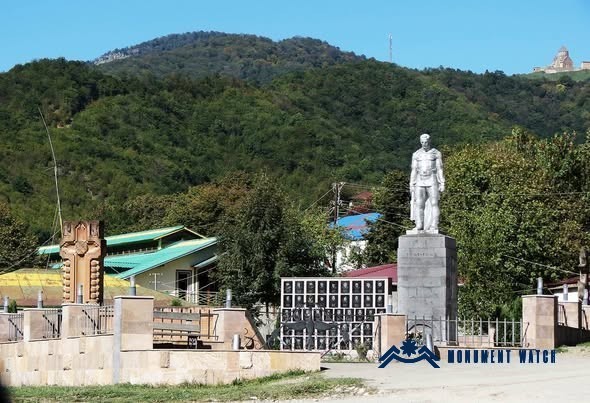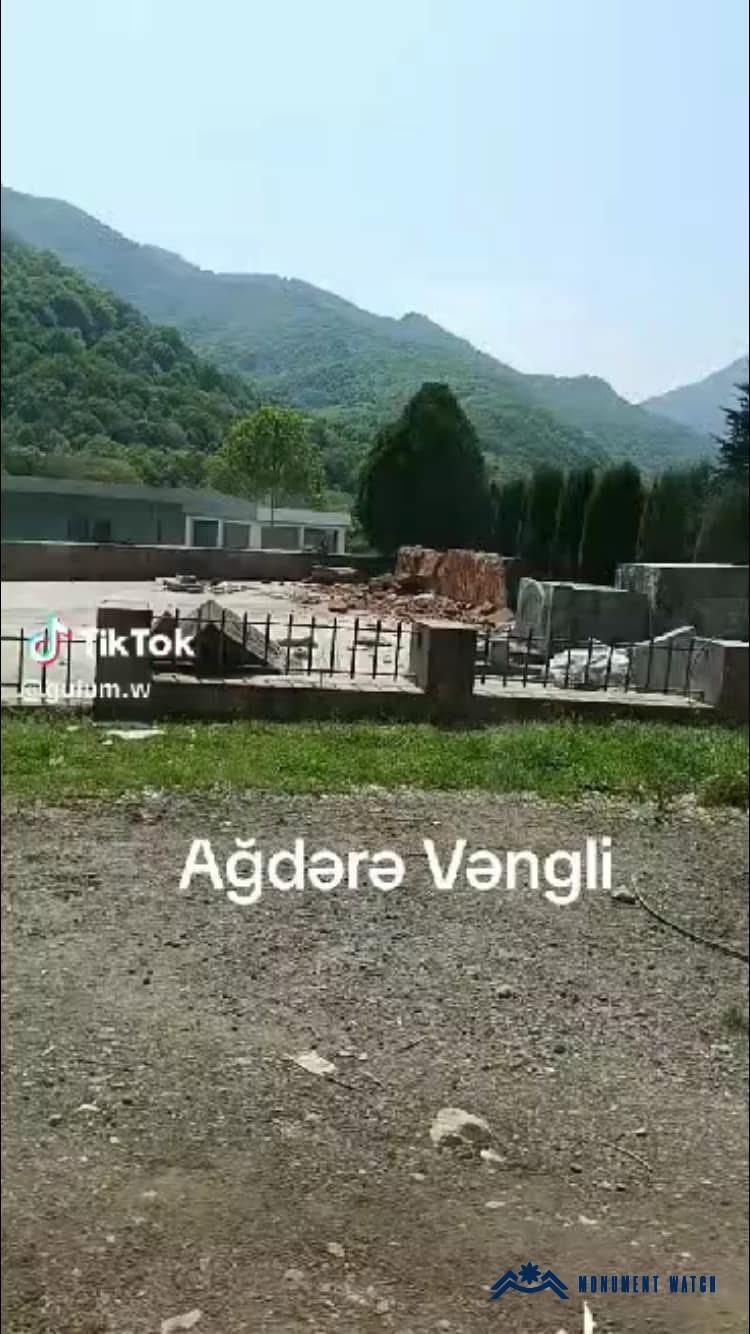On the Eve of May 9: The Destruction of the World War II and Artsakh Liberation War Monuments in the Village of Vank
The policy of anti-Armenian sentiment in Azerbaijan has systematically targeted monuments commemorating the Soviet victory in the Great Patriotic War and those honoring the heroes of the Artsakh Liberation War—many of which coexist within a single cultural landscape. This campaign of destruction intensified following the 2020 conflict, during and after which numerous monuments were demolished.
In May 2025, Artsakhs Monuments reported that Azerbaijani authorities had destroyed the World War II memorial dedicated to the fallen of 1941–1945 in the village of Vank, Martakert District, as well as the khachkar (cross-stone) honoring the martyrs of the Artsakh Liberation War and the memorial wall adorned with bas-reliefs depicting the fallen freedom fighters.
It is essential to note that, alongside the physical removal of these memorials, the ideas and values they embodied are also erased. By obliterating these monuments, the very meaning and institutional center of the May 9 commemorations—celebrating the defeat of fascism—are nullified. The efforts of the Artsakh Armenian diaspora to keep this holiday alive now face a formidable challenge in the absence of its symbolic heritage.
In Shushi, the monument dedicated jointly to the Great Patriotic War and the Artsakh Liberation War was destroyed. In Hadrut and the village of Hakaku (Hakav) in the Martuni region, the complex honoring local war casualties—once guarded by Azerbaijani soldiers—was demolished. The memorial in Getavan, as well as the building of the Union of Freedom Fighters, were likewise destroyed. In the village of Ukhtadzor, Hadrut District, both the monument and adjacent khachkar commemorating the Artsakh Liberation War were razed. Monuments to World War II heroes were also torn down, including the half-length statue of Marshal of Soviet Aviation—which commemorated Armenak Khanperyants (born Sergey Khudyakov)—alongside a decommissioned MiG-17 fighter jet in the village of Mets Taghlar, Hadrut District. In Stepanakert, the half-length statue of Admiral Ivan Isakov (an Armenian by birth, Hero of the Soviet Union, and naval strategist) was destroyed.
Our Response
Any act by Azerbaijan to destroy Armenian cultural heritage is expressly prohibited under numerous conventions adopted by UNESCO and the Council of Europe, as well as by the provisions of the International Court of Justice and related international instruments.
It is critically important to emphasize that the International Court of Justice has affirmed that laws in effect within occupied territories—including those concerning the protection of cultural heritage—have acquired the status of customary international law. In other words, they operate as universal and binding norms for all states (see the ICJ's reasoning in the case concerning the Separation Wall in the Occupied Palestinian Territory: https://casebook.icrc.org/case-study/icjisrael-separation-wallsecurity-fence-occupied-palestinian-territory). Under customary international law, the willful destruction of heritage is prohibited. Furthermore, on March 12, 2024, the European Parliament adopted a resolution regarding closer ties between the EU and Armenia and the necessity of a peace agreement between Azerbaijan and Armenia; paragraph 19 of that resolution explicitly condemns any acts of destruction, vandalism, or desecration targeting historical and cultural sites that bear witness to Armenia's centuries-long presence in the region (see: https://oeil.secure.europarl.europa.eu/oeil/popups/ficheprocedure.do?lang=en&reference=2024/2580(RS)).

